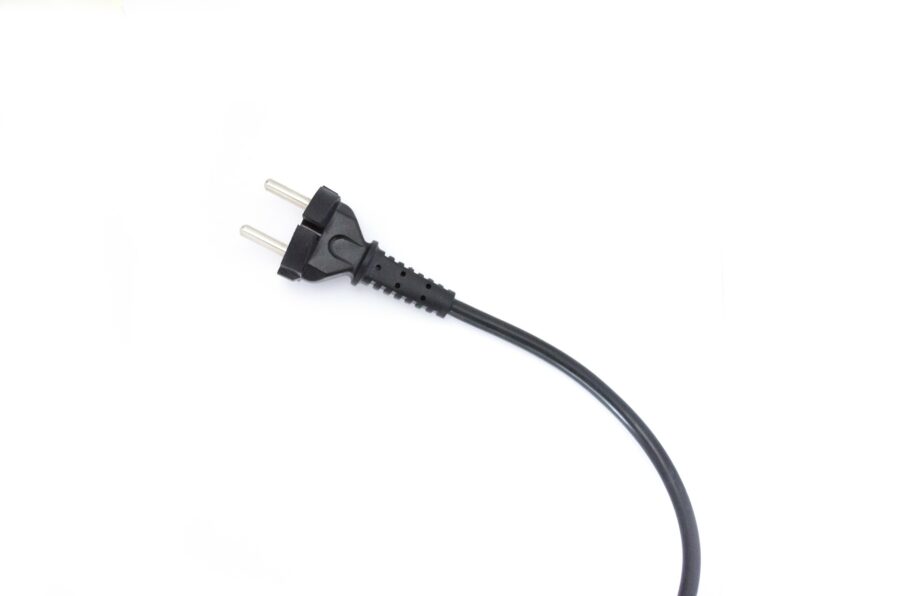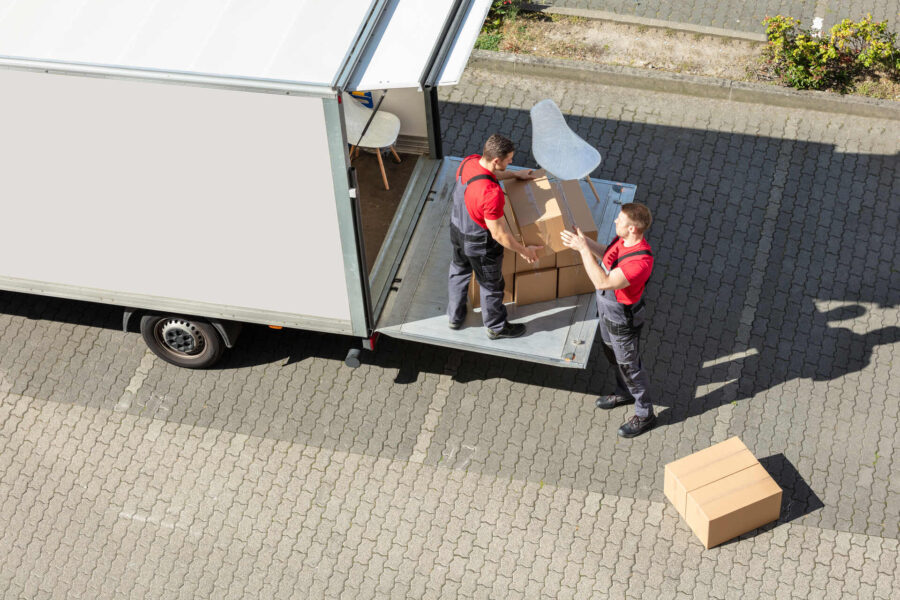

How to Move a Refrigerator: A Step-by-Step Guide
Posted in How-to,Moving Tips & Tricks on June 15, 2023
Moving a refrigerator can be a complicated task, but with the right approach and careful planning, it can be a smooth and successful endeavor. Whether you are relocating to a new home or simply rearranging your kitchen, knowing how to move a refrigerator properly is essential to prevent damage and ensure its safe transportation. In this step-by-step guide, we will walk you through the entire process, providing you with valuable tips and techniques to make the task easier and stress-free.
If you’re wondering how to move a fridge, proper preparation, planning, and securing the appliance are essential. Enlist help, use appropriate equipment, and ensure it stays upright during transport. Take precautions, such as measuring doorways and pathways, defrosting the appliance, and securing the power cord. By knowing how to move a refrigerator correctly, you can ensure its safe transportation and a smooth relocation experience.
Step 1 – Preparing for the Move
Before you begin stressing about how to pack a refrigerator for shipping, it is crucial to make the necessary preparations to ensure a smooth and efficient relocation process. This step of preparing for a relocation involves gathering the necessary supplies and equipment, measuring doorways and pathways, emptying and defrosting the appliance, as well as disconnecting and securing the power cord.
Gathering Necessary Supplies and Equipment
To relocate your refrigerator safely, you will need specific supplies, packing materials, and equipment. Gather sturdy moving straps or ropes, furniture sliders or a dolly, packing paper and tape, bubble wrap or moving blankets, and a screwdriver. These tools will assist you in securing and protecting your appliance during shipping.
Measuring Doorways and Pathways
Measuring the doorways and pathways through which the fridge will pass is crucial to avoid any potential obstacles, relocation mistakes, or damage. Ensure that it can fit through the doors, hallways, and staircases without any issues. Measure the height, width, and depth of the appliance, as well as any narrow passages it needs to navigate.
Emptying and Defrosting the Refrigerator
Before relocating the fridge, empty its contents completely. Remove all food, beverages, and perishable items. Additionally, take out any detachable shelves, drawers, and other loose parts and pack them separately. Defrosting the appliance is equally important. Turn it off and allow the ice to melt naturally. Place towels or absorbent materials around the base to collect the water. Watch this video if you need more defrosting tips.
Disconnecting and Securing the Power Cord
The next step on how to pack a refrigerator for moving is to make sure to disconnect and secure the power cord properly. Unplug the appliance from the electrical outlet and carefully coil the cord. Secure it with a zip tie or tape to prevent it from dragging or getting tangled during shipping. This step will not only protect the cord but also prevent any potential accidents or damage to the electrical components.

Step 2 – Planning the Route
Once you have prepared the fridge for the move, the next essential step is to plan the route for its transportation. This step involves assessing potential obstacles and challenges, clearing the pathway for easy movement, and identifying doorways and tight spaces that may require special attention.
Assessing Obstacles and Potential Challenges
Take a careful look at the route from the current location of the appliance to its destination. Assess the surroundings and identify any potential obstacles that may hinder the smooth movement of the appliance. These obstacles can include furniture pieces, narrow hallways, staircases, or uneven surfaces. By identifying these challenges in advance, you can plan alternative routes or strategies to navigate around them.
Clearing the Pathway for Easy Movement
To ensure an easy and safe relocation, it is essential to clear the pathway. Remove any furniture, rugs, or other items that may obstruct the passage. Create a wide and unobstructed path by temporarily removing any obstacles or arranging them in a way that allows for easy maneuvering of the appliance. This step will minimize the risk of accidents or damage during the relocation.
Identifying Doorways and Tight Spaces
Pay close attention to doorways and tight spaces along the route. Measure the dimensions of these areas to ensure the appliance can pass through without difficulty. If there are narrow doorways or tight corners, consider removing the doors temporarily to create more clearance.
Additionally, check for any protruding or low-hanging structures, such as light fixtures or cabinets, which may require additional precautions or adjustments during the relocation. By identifying these areas beforehand, you can plan accordingly and avoid any potential mishaps or damage to the appliance or surroundings.
Step 3 – Moving the Refrigerator
Moving the fridge itself requires careful handling and coordination. In this step, we will discuss the importance of enlisting the help and ensuring proper lifting techniques, using moving straps or a dolly for added support, sliding or rolling the refrigerator along the floor, and navigating stairs or elevators safely.
Enlist Help and Ensure Proper Lifting Techniques
Moving heavy appliances such as refrigerators is not a one-person job. It is crucial to enlist the help of at least one or two strong individuals to assist you in lifting and maneuvering the appliance. Before lifting, communicate and plan the actions with your helpers to ensure a coordinated effort. Remember to use proper lifting techniques: bend at the knees, keep your back straight, and lift with your legs rather than your back. Distribute the weight evenly among all lifters to minimize strain and avoid injury.
Use Moving Straps or a Dolly for Added Support
To provide additional support and make the relocation easier, consider using relocation straps or a dolly. These straps are designed to distribute the weight and offer a secure grip on the appliance. They can help reduce the strain on your body and make it easier to navigate tight spaces. Alternatively, a dolly can be used to transport the item on wheels, especially when dealing with longer distances or uneven surfaces.
Slide or Roll the Refrigerator Along the Floor
When possible, sliding or rolling the fridge along the floor can be a more efficient and safer method of transportation. Lay down a protective covering, such as cardboard or a relocation blanket, to prevent scratches or damage to the flooring. Tilt the appliance slightly backward and, with the help of your team, gently slide or roll it forward. Take caution not to tilt it too much, as this may cause instability. Ensure a controlled and steady movement to maintain balance.
Navigate Stairs or Elevators Safely
When tackling the task of how to move a refrigerator up the stairs (or down,) you should know that it requires additional precautions to ensure safety. If possible, use a sturdy ramp or a dolly with stair-climbing capabilities. Securely strap the fridge to the dolly to prevent it from shifting during the ascent or descent.
If using a dolly is not an option, and you need to figure out how to move a refrigerator without a dolly, carefully lift it with your team, ensuring each step is taken slowly and securely. Communicate and coordinate each movement to maintain balance and avoid accidents. If using an elevator, check its weight limit and dimensions to ensure the fridge can fit safely. Remember, safety should always be the top priority. Take breaks when needed, stay hydrated, and maintain clear communication with your team throughout the process.

Step 4 – Loading and Transporting
Once you have successfully moved the fridge to the relocation truck, the next crucial step is to position it securely for safe transportation. In this step, we will discuss how to position the fridge securely in a moving vehicle to prevent any damage during transit.
Position the Refrigerator Securely in a Moving Vehicle
To ensure the fridge remains stable and undamaged during transportation, proper positioning in the relocation vehicle is essential. Follow these guidelines and relocation tips to secure it effectively:
- Select a spot in the truck that is stable and provides sufficient support for the appliance. Ideally, it should be against a wall or secured in a corner to prevent shifting during transit.
- Utilize relocation straps, bungee cords, or rope to secure the fridge in place. Attach the straps to sturdy anchor points within the vehicle and tightly fasten them around the appliance, ensuring it is held firmly.
- Place soft paddings, such as relocation blankets or cushions, around the appliance to create a buffer zone and protect it from bumps and vibrations during transportation. This extra layer of cushioning helps minimize the risk of scratches or damage.
- Once the fridge is positioned and secured, test its stability. Ensure that the appliance does not move or wobble excessively. If it shifts, readjust the straps or padding to provide better support.
- Refrain from placing heavy and large items or boxes on top of the fridge during transportation. The additional weight can cause damage or imbalance, compromising its stability.
Hire Cross Country Movers to Ensure Your Items Arrive Safely
When it comes to moving across country, hiring professional movers is crucial to ensure the safe transportation of your belongings. Cross-country movers have the expertise and experience to handle the complexities of long-distance relocations.
They possess the necessary knowledge and resources to plan and execute your relocation efficiently, minimizing delays and reducing the risk of damage. With access to reliable transportation and equipment, they can securely pack, load, and protect your items during transit. Reputable long-distance movers also provide insurance coverage, offering financial protection in case of any unforeseen accidents or losses.
Use More Than One Long Distance Moving Service
For particularly large or complex moves, utilizing multiple cross-country moving services can be advantageous. Relocating is a stressful and time-consuming process, but utilizing a variety of relocation services when hiring a reputable company can make it much easier. Here are some ways you can take advantage of professional relocation services:
- Packing services – Professional movers can help you pack up your belongings quickly and efficiently, using high-quality packing materials and techniques to ensure that your items are protected during shipping.
- Loading and unloading services – Experienced movers can safely load and unload your belongings onto the relocation truck, reducing the risk of damage or injury.
- Storage services – If you need to store some of your belongings during the relocation, a reputable moving company can offer secure, climate-controlled storage options.
By utilizing a variety of moving services from a reputable company, you can enjoy a stress-free move and save valuable time. Be sure to research different companies and read reviews or ask for company recommendations before hiring one to ensure that you choose a company that meets your needs and has a good reputation.

Knowing How to Move a Refrigerator Will Make the Move Easy
Knowing how to move a fridge properly is essential to ensure a smooth and stress-free relocation experience. By following the steps outlined in this guide, you can confidently navigate the process all on your own. However, the best way to move a refrigerator is always with the help of professional movers. So, contact us and allow Cross Country Movers to transport your appliance safely and take care of every aspect of your relocation.
Frequently Asked Questions
Is It Necessary to Hire Professional Movers?
Whether or not to hire professional movers depends on various factors, such as the size of the fridge, the complexity of the relocation, your physical capabilities, and your relocation budget. While hiring professionals can provide several benefits, such as their expertise, experience, and equipment, it is not always necessary.
If you have a smaller fridge and feel confident in your ability to follow proper techniques, enlist the help of friends or family members. However, for larger or more challenging moves, involving professional movers can ensure a smoother and safer relocation process. They have the necessary skills and equipment to handle heavy appliances, navigate obstacles, and minimize the risk of damage.
How Do I Ensure the Refrigerator Stays Upright During Transport?
It is crucial to keep the appliance upright during transport to avoid any potential damage. Transporting it in any other position, such as on its side or back, can cause oil from the compressor to flow into the cooling lines, leading to malfunction. To ensure the fridge stays upright, follow these guidelines:
- Position it vertically – always keep it in an upright position, with the doors facing forward. This is the natural orientation that ensures proper functioning.
- Secure it in the truck – place the fridge securely in the truck, ensuring it remains stable and does not tip over during transit. Use straps or ropes to secure it to anchor points or against the walls of the vehicle.
- Avoid tilting or excessive movement – minimize tilting or excessive movement of the fridge during transportation. Take caution while navigating corners, ramps, or bumps to prevent it from shifting or falling.
Can I Transport a Refrigerator on Its Side?
Transporting a fridge on its side is generally not recommended. It is best to keep it in an upright position during transportation to maintain its optimal functioning. Tilting or laying it on its side can cause the oil from the compressor to flow into the cooling lines, which may result in damage or malfunctions. However, there are some exceptions for short distances or specific models. If you must transport the appliance on its side, refer to the manufacturer’s guidelines or consult a professional to ensure proper handling and minimize the risks.
What Should I Do If I Cannot Remove the Refrigerator Doors?
If you are unable to remove the fridge doors due to design limitations or technical difficulties, there are alternative approaches to consider during the relocation. Follow these steps:
- Secure the doors – use strong packing tape or bungee cords to securely fasten the doors to prevent them from swinging open during transport.
- Protect the doors – place cardboard or relocation blankets over the doors to protect them from scratches or damage during shipping.
- Take extra precautions – when moving through doorways or tight spaces, be cautious to prevent the doors from hitting walls or objects. Communicate with your team to coordinate movements and ensure the doors are protected.
How Long Should I Wait Before Plugging in the Refrigerator After Moving?
After relocating the appliance, it is essential to allow it to settle and stabilize before plugging it in. This settling period allows the fridge’s internal components, such as the compressor and cooling system, to readjust and avoid potential damage. It is generally recommended to wait for a minimum of 2-3 hours before plugging it back in. However, consult the manufacturer’s guidelines or the appliance’s user manual for specific recommendations, as the waiting time may vary depending on the model.






